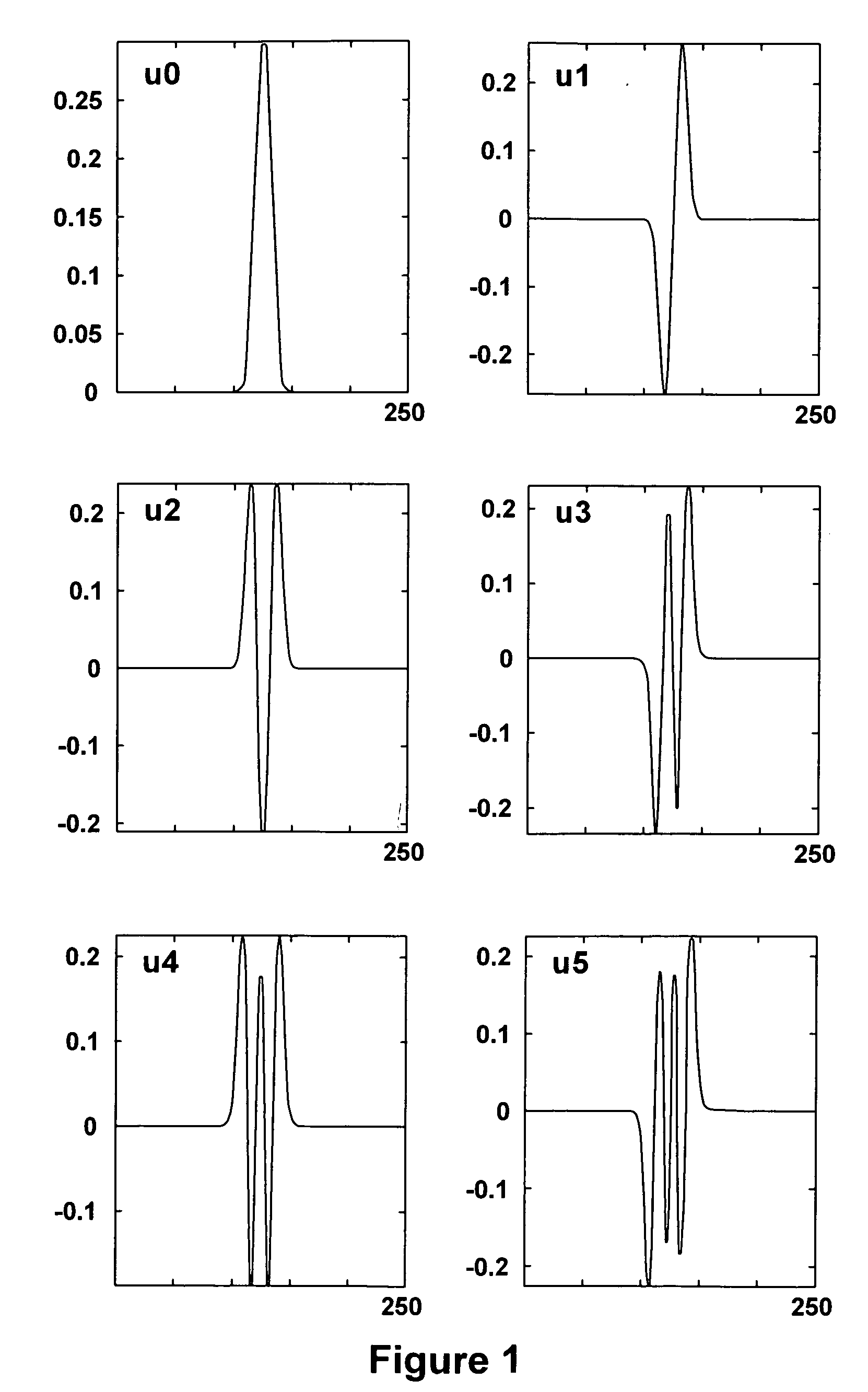General diagnostic and real-time applications of discrete hermite functions to digital data
a technology digital data, applied in the field of general diagnostic and real-time application of discrete hermite functions to digital data, can solve the problems of overlapping collection, affecting and affecting so as to improve the critical assessment of data signals and enhance the realization of desired signals
- Summary
- Abstract
- Description
- Claims
- Application Information
AI Technical Summary
Benefits of technology
Problems solved by technology
Method used
Image
Examples
Embodiment Construction
[0049]The present invention relates to methods and systems for the use of dilated discrete Hermite functions to expand measured signals using a computationally efficient technique. These digital Hermite functions form the basis for the new discrete Hermite transform which provides information about the shape of the signals, such as that in the BCG artifact in an EEG or in an ECG interval, though the new discrete Hermite transform may be applied to any signal corrupted by noise. As used herein, the term “noise” refers to any signal feature that corrupts, distorts or masks, to any degree, a feature of interest. This applies to any signal measurement technique wherein electrical data is gathered from a patient or source and is susceptible to distortion by factors generated either by the patient or by any external source. Noise may include artifacts, abnormalities, additional signals, and other sources that in any way alter the shape features of a notable, or desired, signal. The Hermit...
PUM
 Login to View More
Login to View More Abstract
Description
Claims
Application Information
 Login to View More
Login to View More - R&D
- Intellectual Property
- Life Sciences
- Materials
- Tech Scout
- Unparalleled Data Quality
- Higher Quality Content
- 60% Fewer Hallucinations
Browse by: Latest US Patents, China's latest patents, Technical Efficacy Thesaurus, Application Domain, Technology Topic, Popular Technical Reports.
© 2025 PatSnap. All rights reserved.Legal|Privacy policy|Modern Slavery Act Transparency Statement|Sitemap|About US| Contact US: help@patsnap.com



